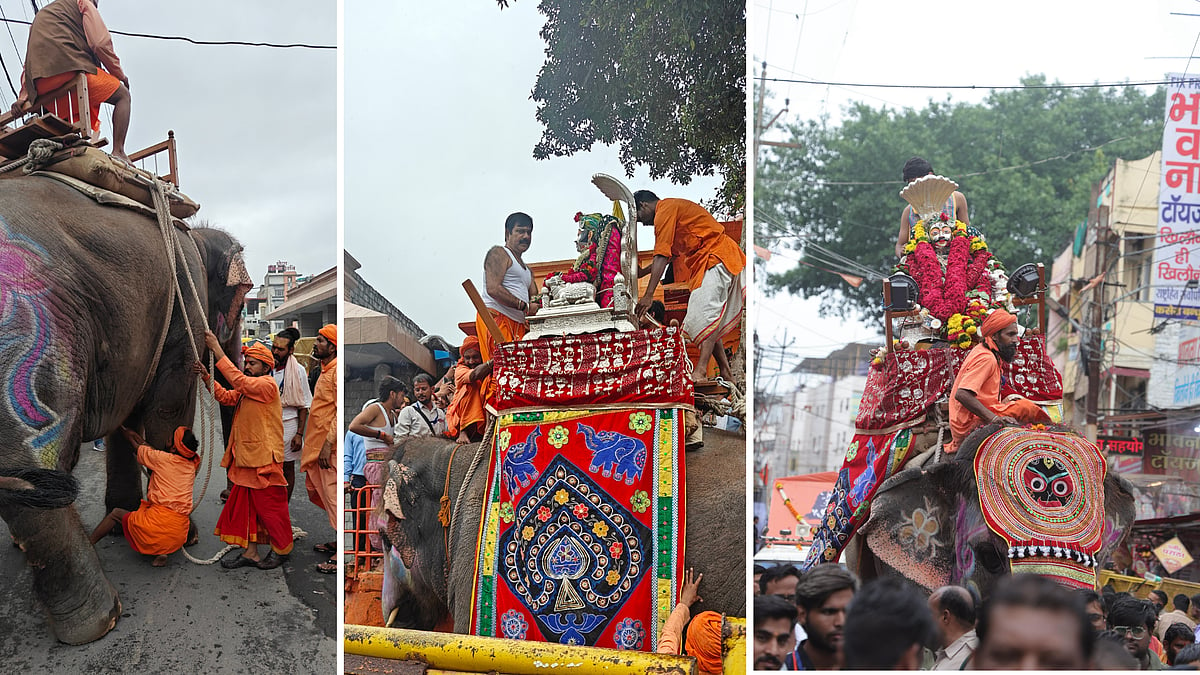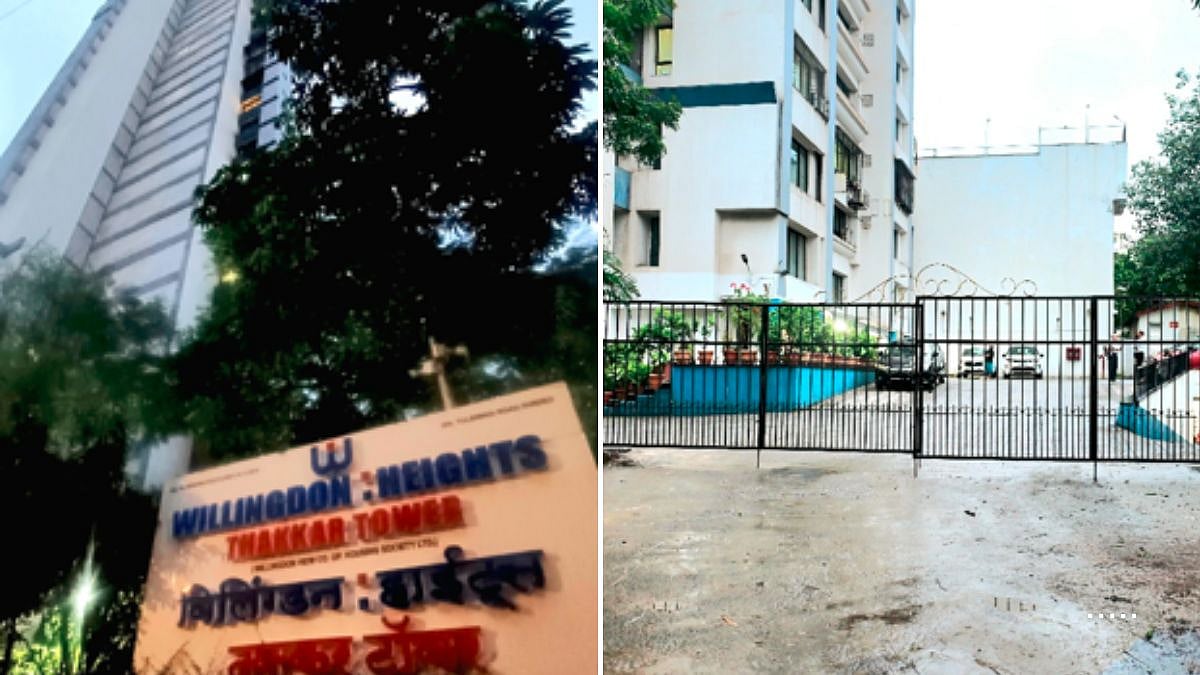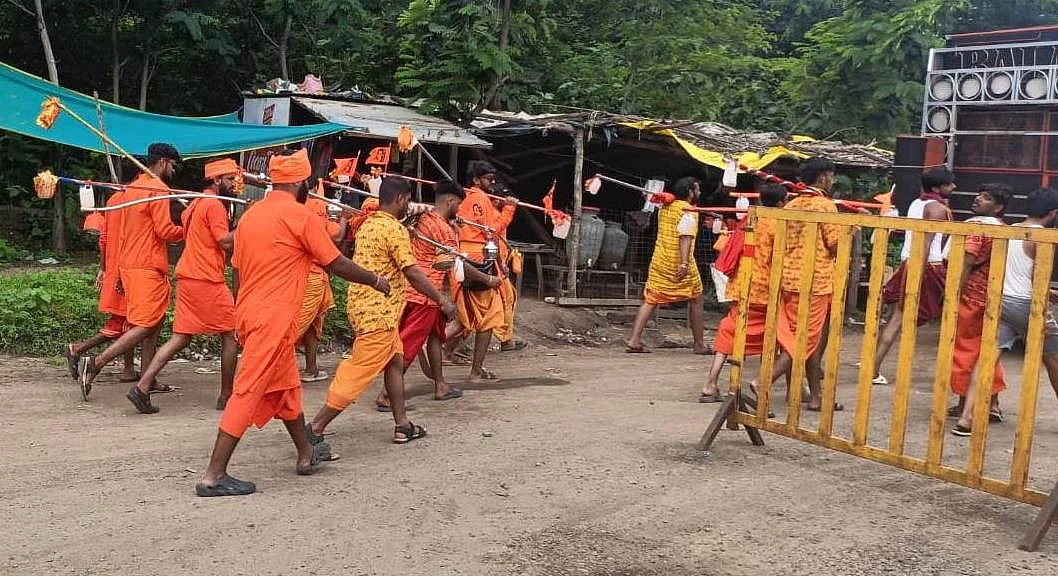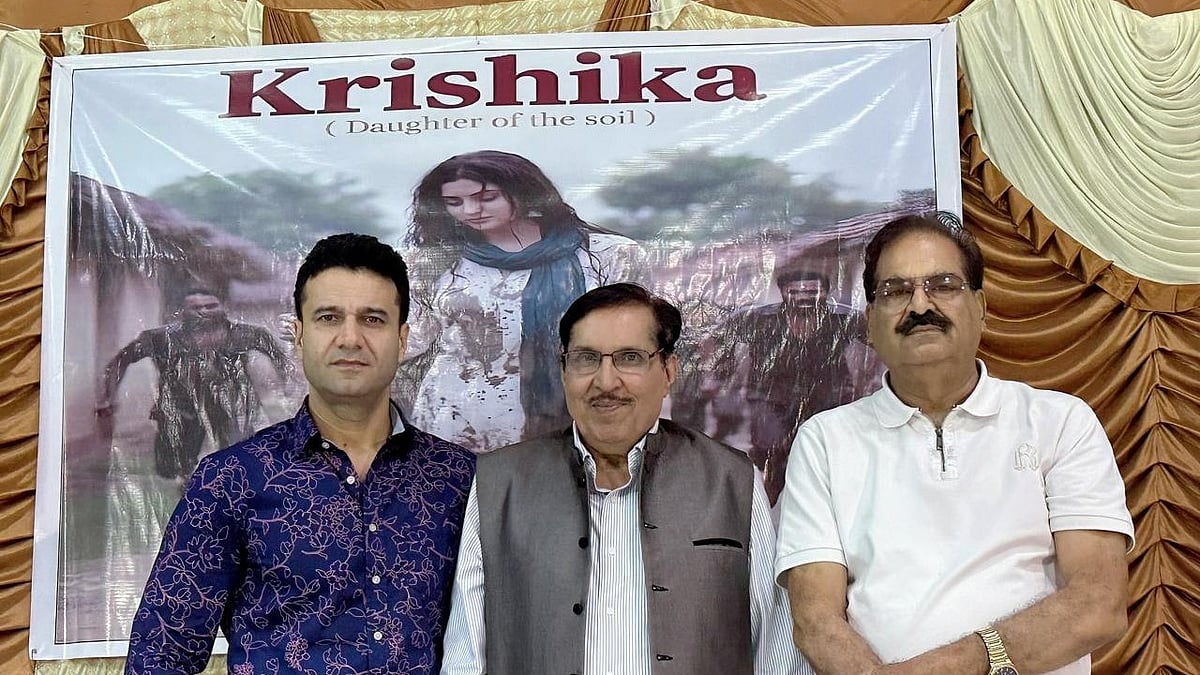Ujjain (Madhya Pradesh): The Mahakaleshwar Bhagwan procession during the sacred months of Shravan and Bhado is nothing short of legendary. Seated in a silver palanquin, Lord Mahakal journeys through the city streets, drawing throngs of devotees from far and wide.
Among the many traditions that make this yatra so iconic is the presence of an elephant, a majestic and essential part of the spectacle. Here's a closer look at Shyamu, the approximately 26-year-old male elephant who has been a part of the procession since 2006.
When Baba Mahakal’s procession starts from Mahakaleshwar temple at 4 pm on Mondays, Shyamu is brought in and made to stand at the ‘Hathi Dwar’ near the temple a few hours in advance. The elephant’s home is the courtyard of Shaktisur Mahadev temple in Saidham Colony. He is bathed and massaged thoroughly with sweet oil provided by the temple committee storehouse.

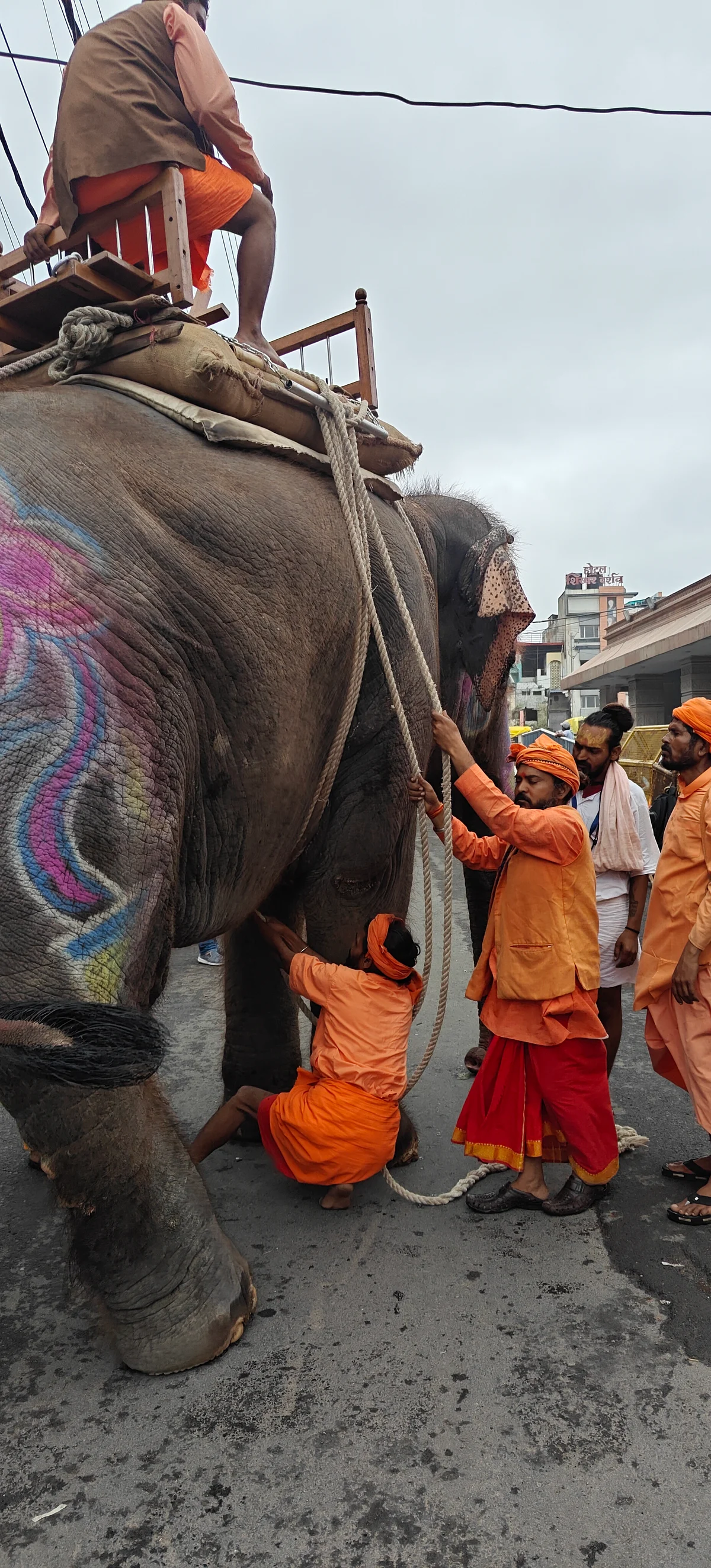
Kahars and mahouts tide throne on elephant with ropes | FP Photo

A 250 kg wooden ‘hindola’ (throne) is placed on the elephant’s back by Kahars under the supervision of the mahouts. This difficult process takes about 1-½ hours. This throne is tied very firmly on the elephant’s back with the help of thick, long ropes. After that, Shri Mahakaleshwar’s replica in the Manmahesh form is placed on the throne, and it is also affixed firmly.
When the Shri Mahakaleshwar idol is worshipped, complete with rituals, in the ‘sabha mandapam’ of Mahakaleshwar temple, Manmahesh’s replica is brought from the ‘HaathiDwar’ and is also worshipped before being seated atop the throne.
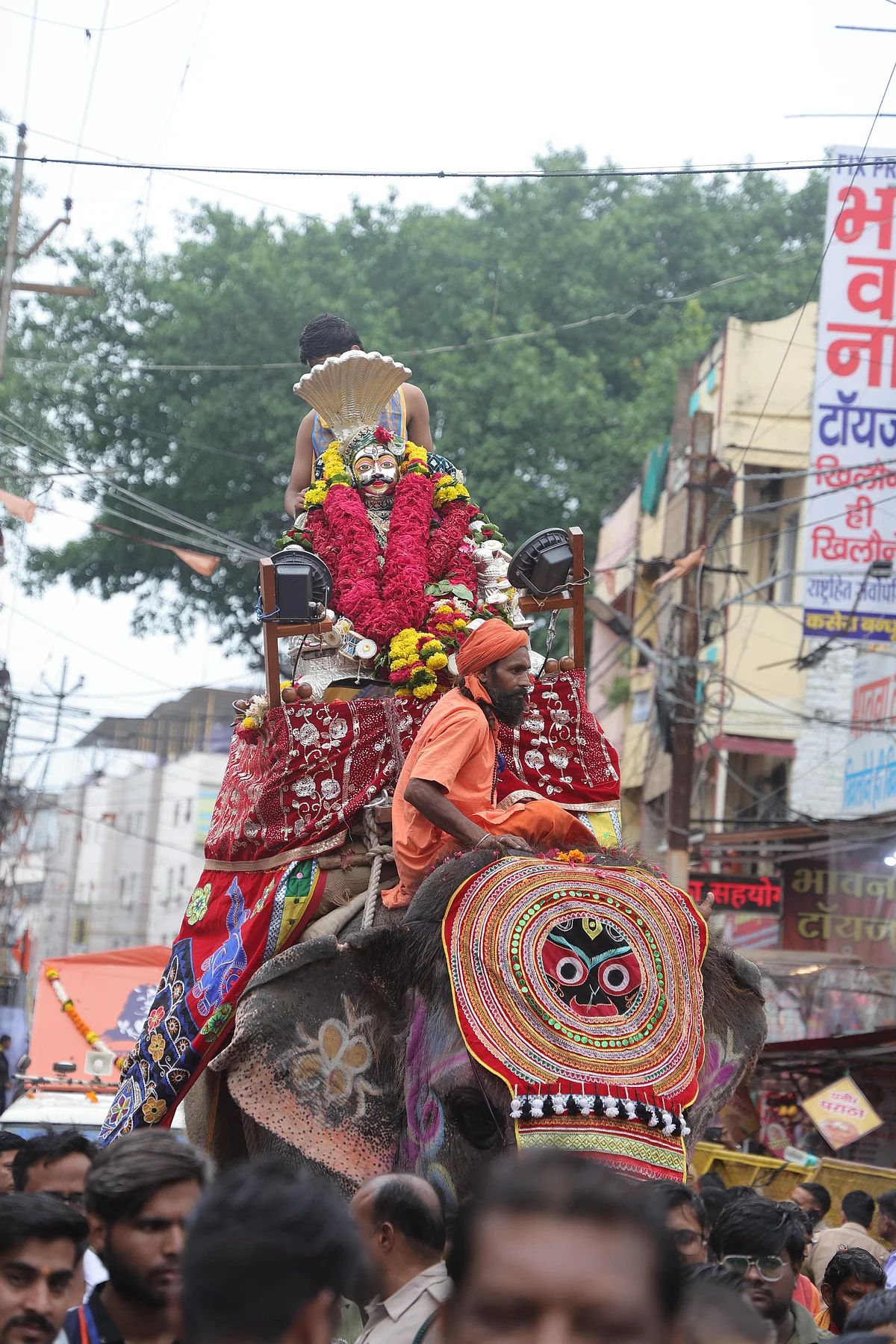
Elephant Shyamu participates in the sawari with full colours | FP Photo
The responsibility of decorating the elephant and taking it in the procession lies with the priest of the Mahakaleshwar temple, Pandit Dilip Guru, who has been doing this since 1994. At that time, a wooden throne was donated to the Mahakaleshwar temple, and it is carried on an elephant every year during the Baba Mahakal procession in the month of Shravan-Bhado.
He says that Baba Mahakal, in the form of Chandramouliswara, carried by the Kahars in a palanquin on their shoulders in the procession, is not easily visible to the people who are unable to do the pujan. That is why the Manmahesh form of Baba Mahakal is carried on an elephant. The employees of the Forest, Veterinary, Police, and Electricity departments remain present throughout, and the Ghatiya SDM is responsible for these arrangements.


The Manmahesh form of Lord Mahakal being seated on throne | FP Photo
Chief Mahout Laxminarayan Giri says that before Shyamu, Ramu served the yatra for about 60 years. When he is brought to the Mahakaleshwar temple, Shyamu is given a fixed meal, which includes 15 to 20 kg of flour rotis (balls), 150 kg of sugarcane, and grass. The elephant is also given a proper medical examination. Mahakaleshwar Temple Management Committee pays about Rs 15,000 per ride.
Till date, no problem has arisen in the entire process of bringing the elephant and during the sawari. The elephant joins the second ride. It follows the main palanquin of Baba Mahakal, but when Baba’s ride reaches Ram Ghat of Kshipra river for the customary worship, it waits for the elephant.
The elephant is made to stand close to the palanquin on the ghat. After the puja, the palanquin moves forward again and the elephant follows. The royal procession is about 7 km long while the rest of the processions are 4-½ km long.
